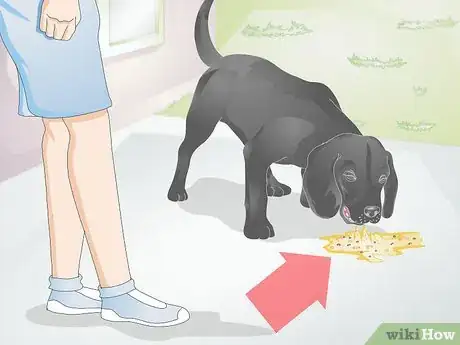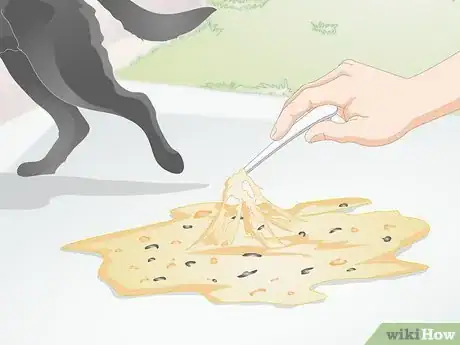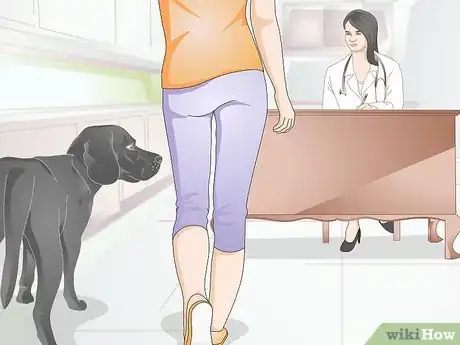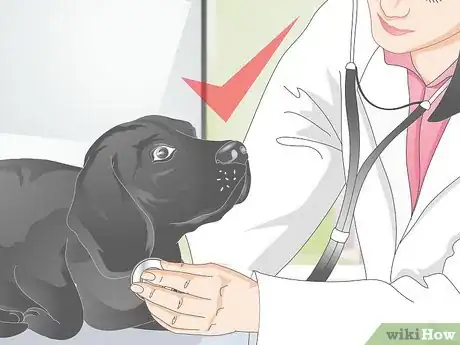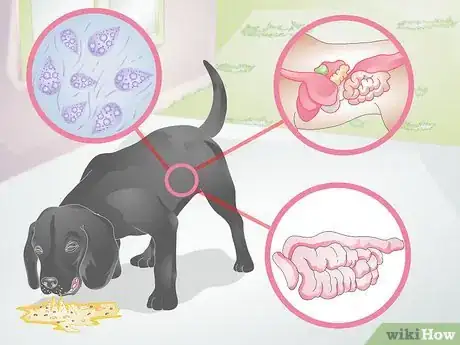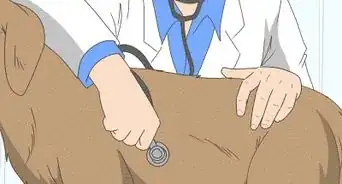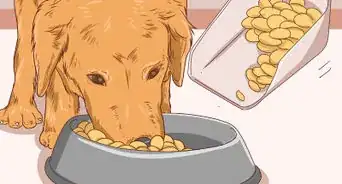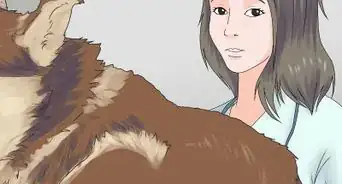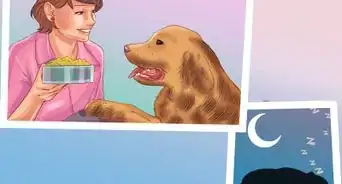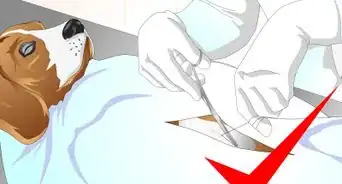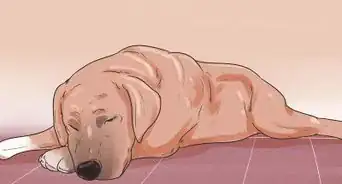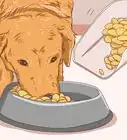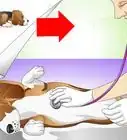This article was co-authored by Pippa Elliott, MRCVS. Dr. Elliott, BVMS, MRCVS is a veterinarian with over 30 years of experience in veterinary surgery and companion animal practice. She graduated from the University of Glasgow in 1987 with a degree in veterinary medicine and surgery. She has worked at the same animal clinic in her hometown for over 20 years.
This article has been viewed 58,072 times.
A dog will vomit when something upsets its stomach. When your dog’s vomit is yellow and foamy, the yellow fluid you see is bile. After a meal, bile normally flows from the gallbladder into the small intestine to help break down fats. However, on an empty stomach, bile can enter the stomach and irritate the stomach lining enough to cause vomiting; this is called ‘bilious vomiting syndrome.’[1] Be observant when your dog’s vomit is yellow and foamy, then take your dog to your vet for a diagnosis.
Steps
Observing Vomiting Behavior
-
1Notice when your dog vomits. Dogs that vomit bile usually do so late in the evening or early in the morning. This is because a dog’s stomach usually empties about two hours after a meal. By late evening or early morning, your dog’s stomach will have been empty for a long time, allowing time for bile to irritate the stomach lining.
- Consider keeping a written log of when you see your dog vomiting. If your dog vomits yellow and foamy fluid before its morning meal or several hours after its evening meal, then your dog likely has bilious vomiting syndrome.
-
2Examine the vomit. Yellow and foamy vomit will not have any food particles in it because the stomach is empty. Vomit with partially digested food will also have bile, but the bile will not be as easy to see. If your dog initially vomits partially digested food and then continues vomiting, the stomach will eventually be empty and you will see only the yellow and foamy fluid.Advertisement
-
3Detect pain or distress during vomiting episodes. Vomiting is not a pleasant experience for dogs. Besides the distress of vomiting, your dog may have some abdominal pain because of bile’s irritation of the stomach lining.[2] Below are signs of distress that your dog may have during a vomiting episode:[3]
- Licking the lips
- Drooling
- Repeatedly swallowing
Getting a Veterinary Diagnosis
-
1Take your dog to your vet. By itself, bilious vomiting syndrome is not a serious problem in dogs. However, it can lead to other problems. Therefore, if your dog is vomiting bile, do not delay with taking your dog to your vet.[4] The sooner your vet can diagnose this syndrome, the sooner your dog can receive treatment and not develop health problems related to vomiting bile.
-
2Have your vet examine your dog. Your vet will perform a physical examination. During the physical exam, describe the vomiting episodes in as much detail as possible: when your dog vomits, what the vomit looks like, and how long the vomiting has been going on. The more information you give your vet, the better able they’ll be able to diagnose your dog.
-
3Learn about why dogs vomit bile. Although it’s well known that dogs vomit bile when they have an empty stomach, it’s not clearly known how the bile gets into the stomach in the first place.[5] Some potential causes of bile abnormally flowing into the stomach include inflammatory bowel diseases, internal parasites (Giardia), and intestinal blockage.
References
- ↑ https://sfvs.wordpress.com/tag/bilious-vomiting-syndrome/
- ↑ https://www.vetinfo.com/bilious-vomiting-syndrome-in-dogs.html
- ↑ http://www.vcahospitals.com/main/pet-health-information/article/animal-health/vomiting-in-dogs/869
- ↑ https://www.vetinfo.com/bilious-vomiting-syndrome-in-dogs.html
- ↑ https://sfvs.wordpress.com/tag/bilious-vomiting-syndrome/
- ↑ http://www.azvets.com/why-is-my-dog-throwing-up/
- ↑ https://www.vetinfo.com/bilious-vomiting-syndrome-in-dogs.html
About This Article
To diagnose yellow, foamy vomit, or bilious vomiting syndrome, in your dog, look for vomit that contains only bile, without any food particles. You should also note if your dog vomits on an empty stomach, like early in the morning or late in the evening. Additionally, watch for signs of pain during vomiting, which may be caused by stomach irritation from the bile. If you spot any of these symptoms, take your dog to the vet immediately, since vomiting bile can lead to other health problems. To learn more from our Veterinary co-author, including why dogs vomit bile, read on!
